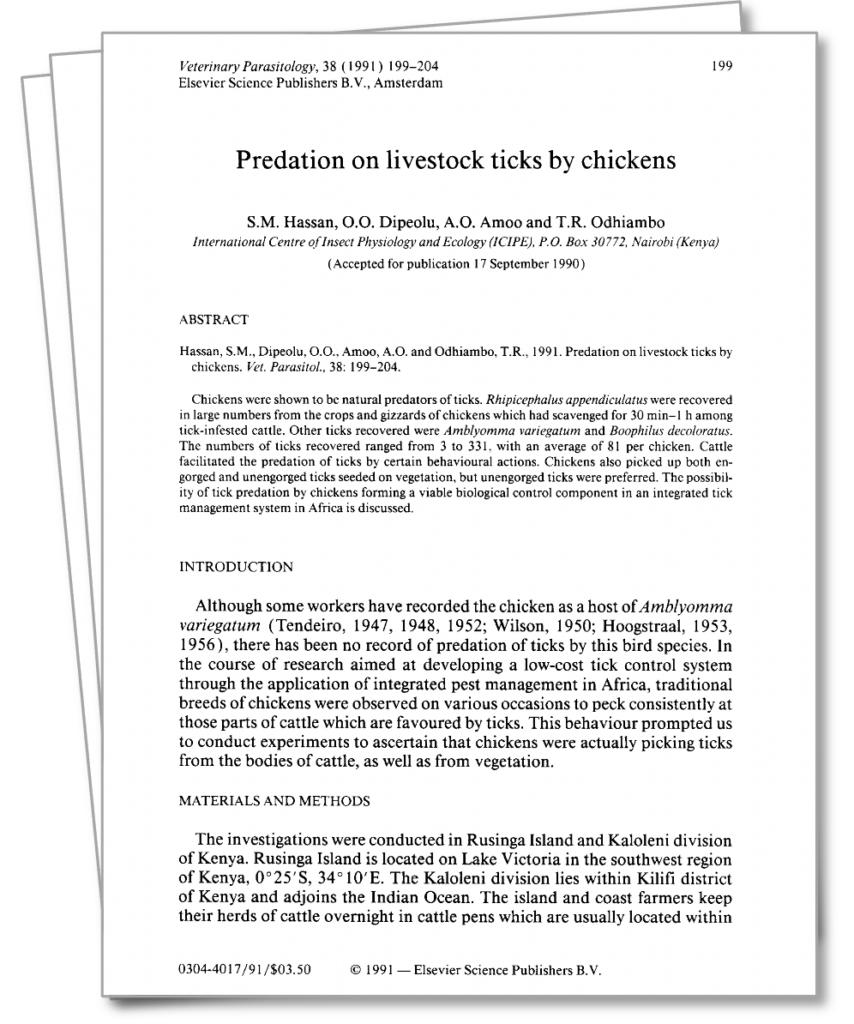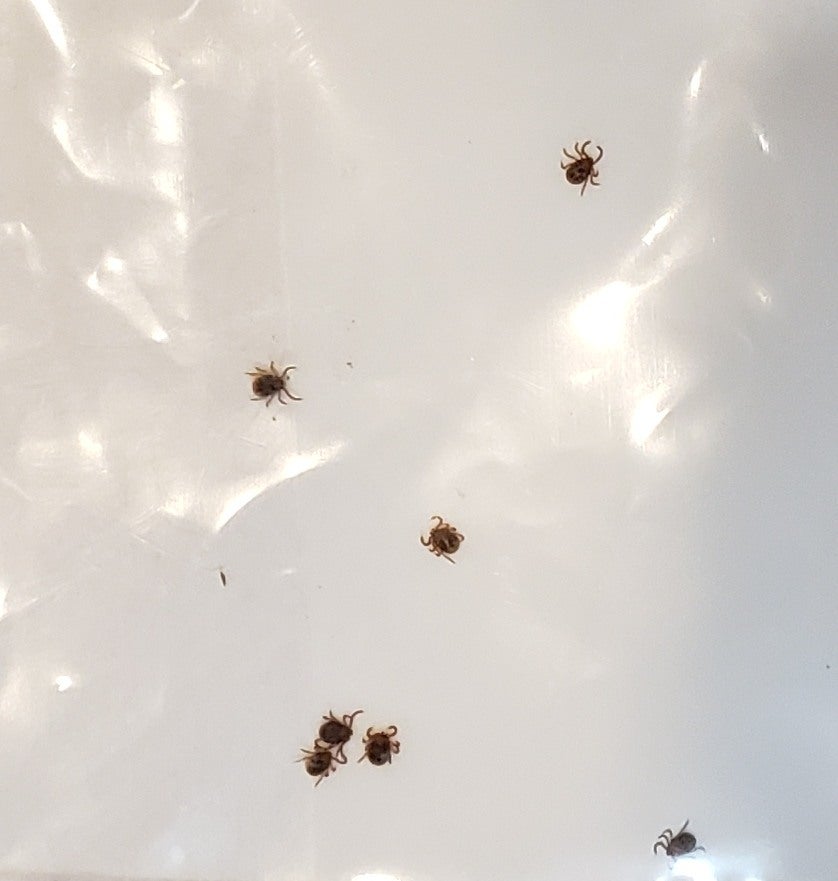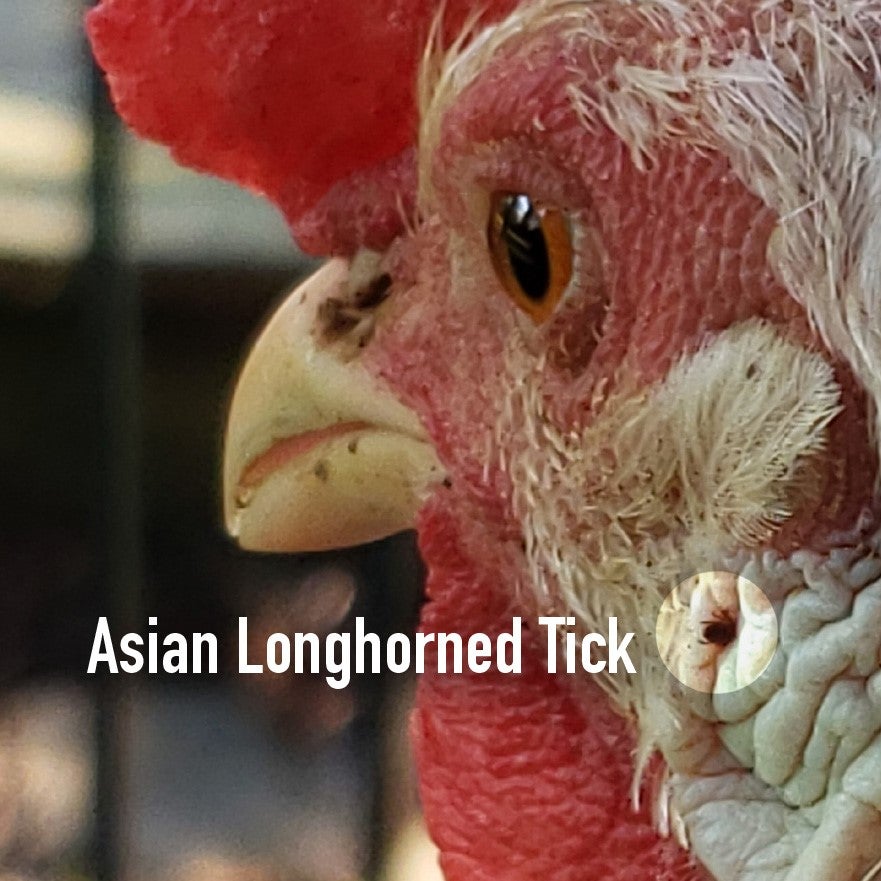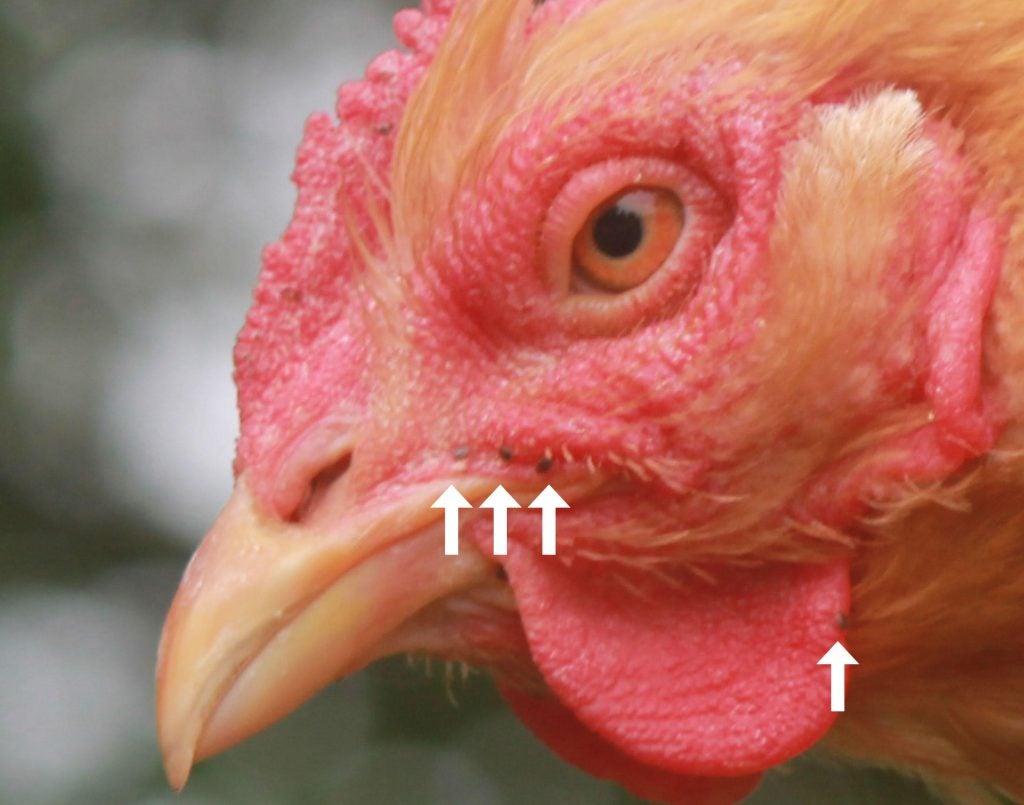BUT TICKS CERTAINLY EAT CHICKS
What’s the first thing you think of when someone mentions backyard chickens? Fresh, healthier eggs, better quality meat, farm to table, quirky pets are cool … but somewhere further down on most people’s list of reasons for keeping backyard chickens is the belief that chickens voraciously eat bugs, and especially, much dreaded disease-causing ticks.
These days, Americans in rural, suburban and even urban settings seem to be flocking to backyard chicken ownership. A USDA survey conducted just a few years back estimated that 1 percent of U.S. households reported owning backyard fowl, and another 4 percent planned to start in the next few years. That’s more than 13 million backyard chicken farmers! This trend is being fueled largely by the ‘local food’ movement but maybe a little by the belief that chickens are tick predators. Google lists almost 600,000 search results for the keywords backyard chickens and ticks. An informal review of the first 10 pages on Google quickly revealed how strongly people believe that their chickens are eating up all of their ticks.
With so many ticks out there, it would seem like there must be something that would eat them. Why not chickens? But while there appears to be a lot of hopeful chicken keepers and guinea fowl wranglers that swear the birds are eating up nearly all of their ticks, we found that there’s virtually no science to back up these claims. It took some digging but we found a 1991 paper in the journal Veterinary Parasitology claiming to be the first scientific report that chicks do eat ticks.

The study seemed pretty thorough – ticks were found in the dissected crops and gizzards of hungry chickens placed in pens with cattle — but this study only involved livestock ticks in Africa, and wasn’t exactly a robust test of the chickens’ capacity for free-range tick control. So, while not wanting to burst any bubbles, American backyard chickens might not be the same boon for tick control in suburban American backyards. We don’t know if they are or are not, but we do know two things — that good science on the matter is lacking, and that anecdotal evidence can lead to potentially risky misconceptions and actions.
That’s why we found it so interesting when a TickSpotter from Chester County, PA sent us a picture of ticks that she was finding FEEDING on her small flock of backyard chickens. Far from an isolated find, she reported finding ticks on her chicks beginning in June, and she continued finding them almost daily on at least one of her hens into September. Ticks eating chickens; well, doesn’t that add an ironic twist to what started out as a chicken-as-tick-predator story.

But what kind of ticks were they? We know that Lone Star ticks are notorious pests of wild turkeys in some regions. And that would make sense in this case, too. Birds like chickens and turkeys forage on the ground, right in potential immature tick habitat. However, the first tick picture submitted looked to us suspiciously like the invasive longhorned tick (short mouthparts), so we asked her to send one or a few samples so that we could confirm the ID. She did, and they indeed all were longhorned ticks. The find represented a new county first record for this tick, and because of her astute observation, chickens are now added to a growing list of potential host animals for this tick. Crowd-sourced information – the power of the crowd – even tracking the invasive longhorned tick.
The ticks seemed to mostly show up on the wattles, comb and ear lobe of the chickens, but then those were the easiest places to see them anyway. Even though the chickens were mostly free-ranging in the large yard, they were handled nearly every day, so mostly, only attached but unengorged ticks were found. There was one engorging nymph near the proximal corner of the beak, attached for probably 3 days or so, providing evidence that longhorned ticks, at least, if given the chance will feed on chickens. What we don’t know, with any certainty though, is if the chickens reciprocated by eating any of the ticks.

TickEncounter picture gallery: TicksEatChicks 
TickEncounter picture gallery: TicksEatChicks
TickSpotters is America’s crowd-sourced tick survey and your connection to a tick expert. Submit a picture of any tick you find and get an email confirmation of the ID, duration of attachment, degree of disease risk, and best next actions you can take. It’s fast and free, and you’ll be helping to track tick trends across America.
